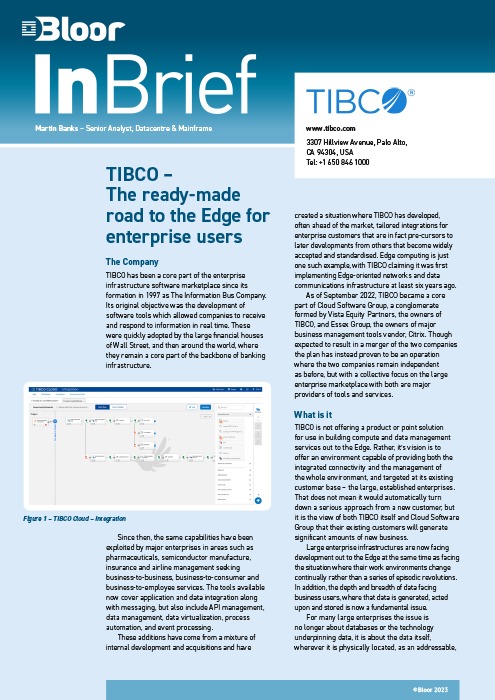TIBCO
2023 Bloor, All Rights Reserved.
Classification
TIBCO’s vision is to offer an environment capable of providing both the integrated connectivity and the management of the whole environment, and targeted at its existing customer base – the large, established enterprises that are now facing development out to the Edge.
TIBCO Flogo Enterprise, TIBCO’s fully supported implementation of the open-source Project Flogo Framework is designed to allow developers to build ultralight, event-driven microservices, it uses browser-based flow design technology to allow users to start running logic and preferred browsers on any device that has a suitable processor chip on-board. This means that business process logic and system control functions can be distributed down to the very end point devices of the network.
Connect with Us
Ready to Get Started
Learn how Bloor Research can support your organization’s journey toward a smarter, more secure future."
Connect with us Join Our Community

